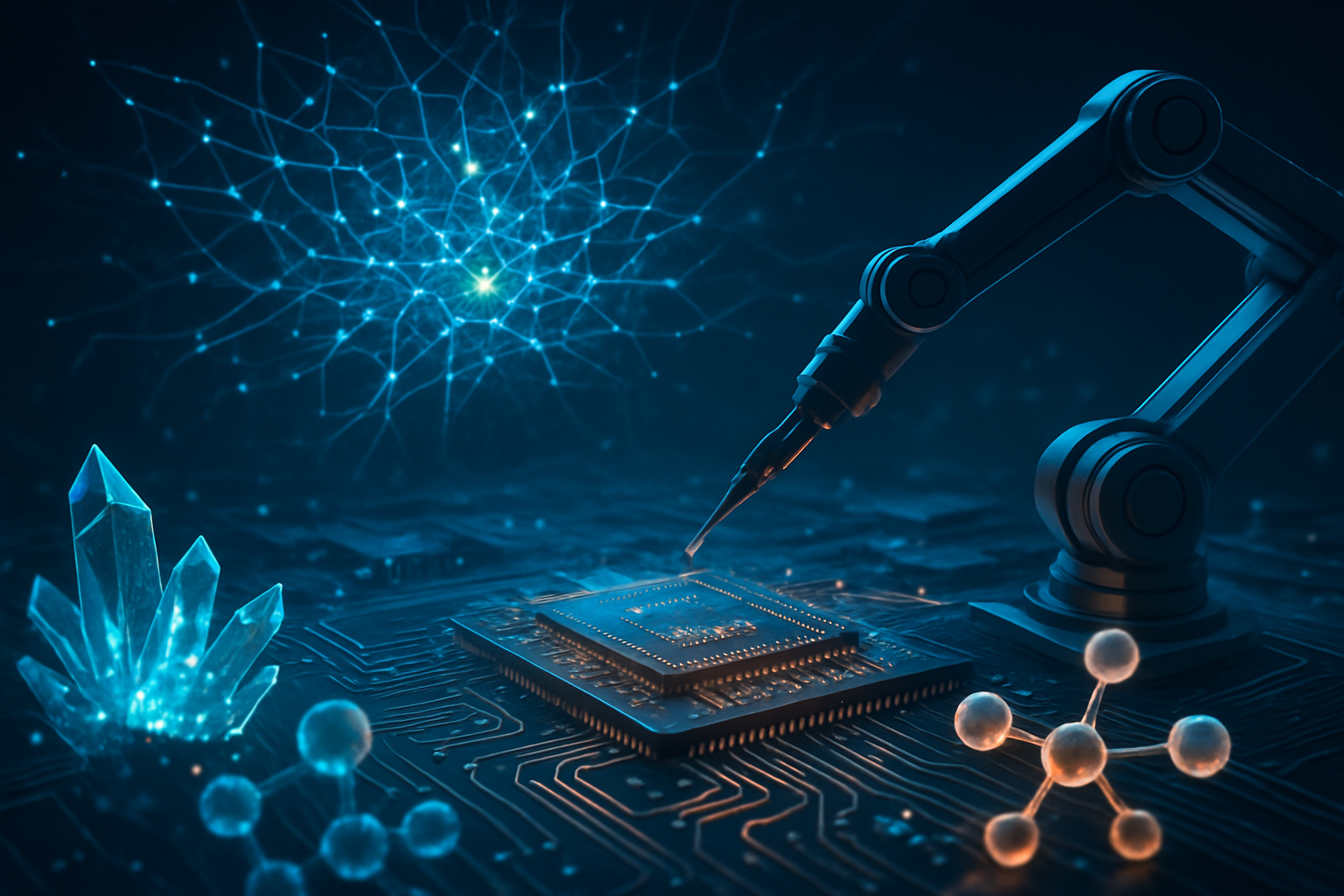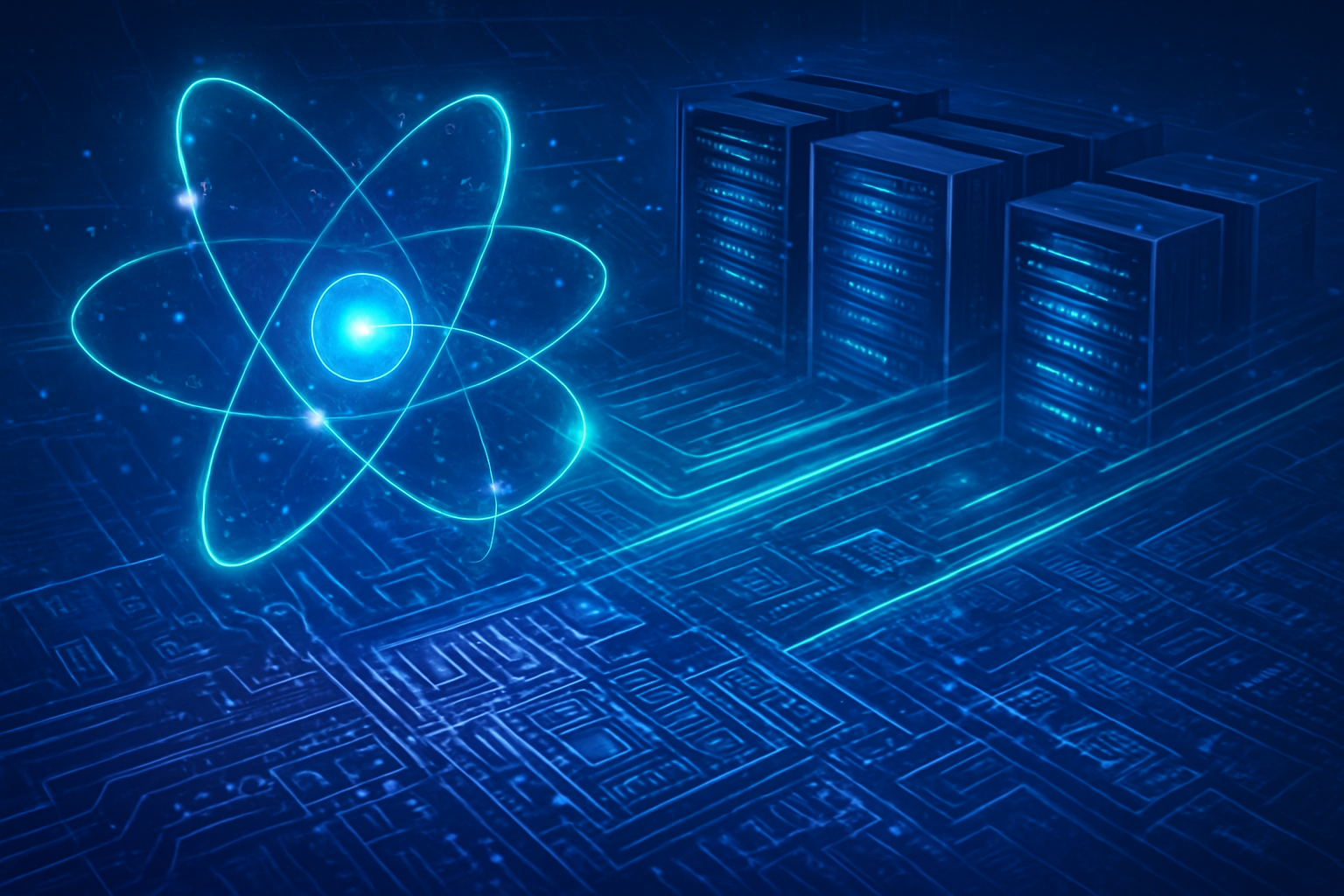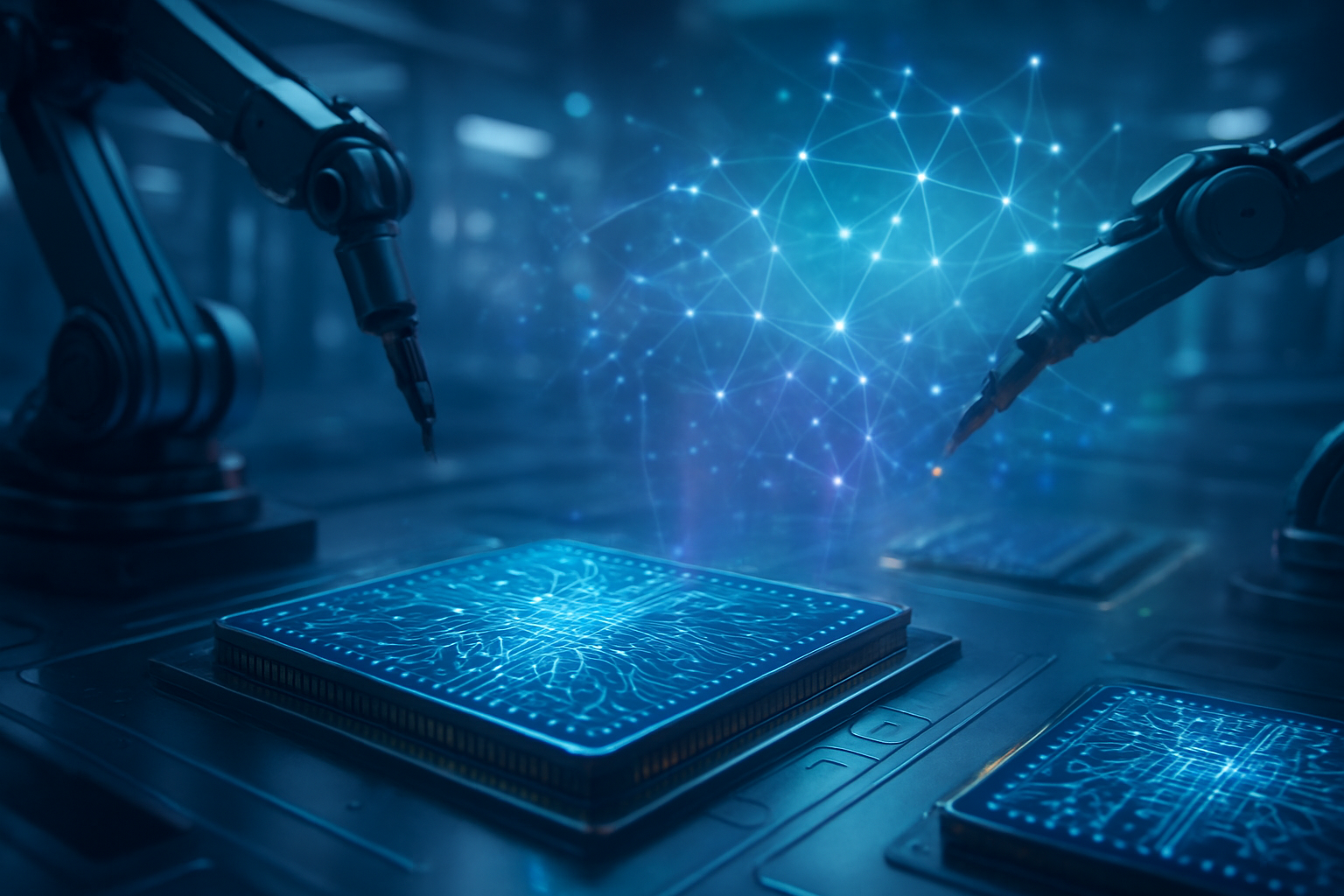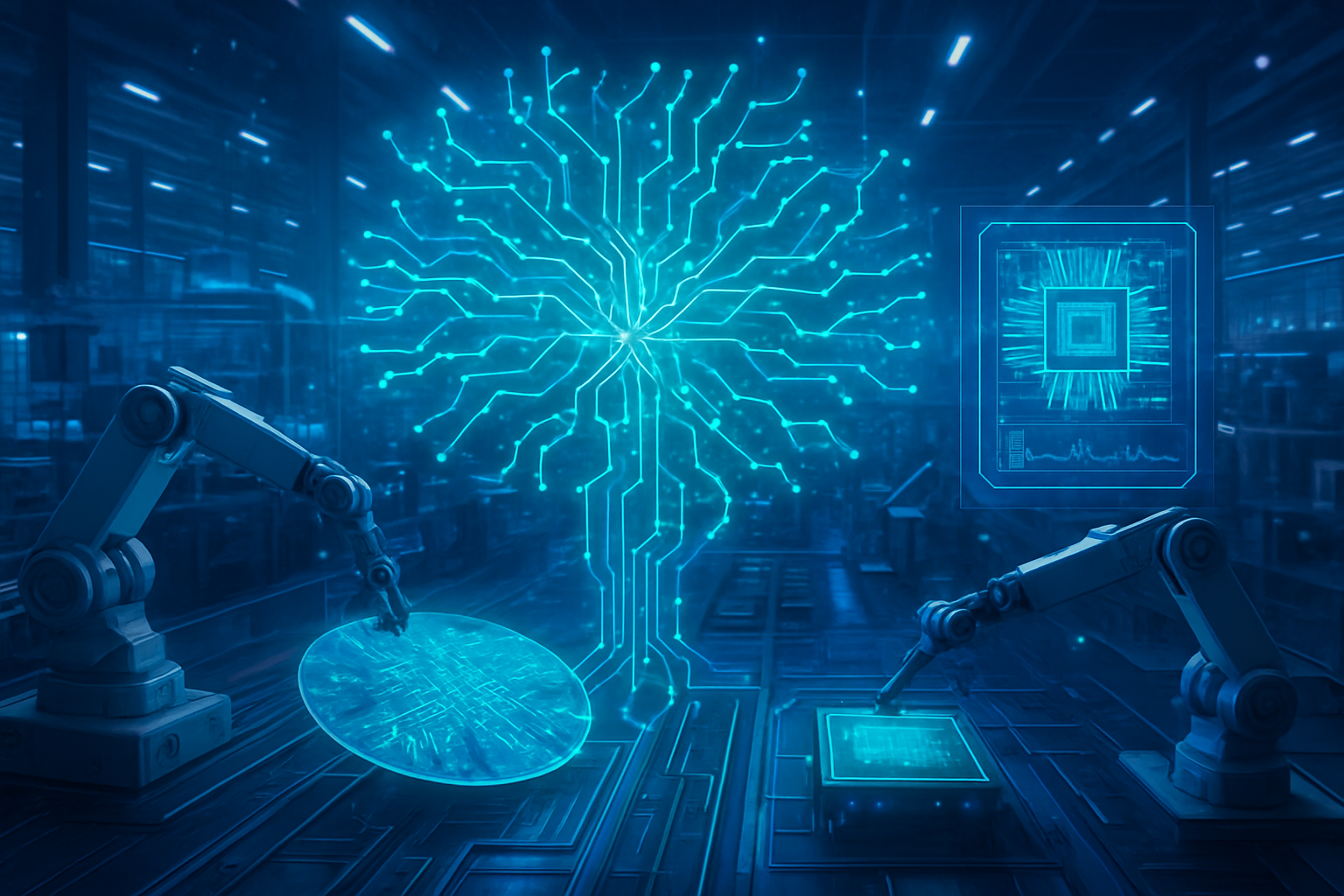The immediate impact of Artificial Intelligence (AI) on chipmaker revenue growth and market trends is profoundly significant, ushering in what many are calling an "AI Supercycle" within the semiconductor industry. AI is not only a primary consumer of advanced chips but also an instrumental force in their creation, dramatically accelerating innovation, enhancing efficiency, and unlocking unprecedented capabilities in chip design and manufacturing. This symbiotic relationship is driving substantial revenue growth and reshaping market dynamics, with companies like Advanced Micro Devices (NASDAQ: AMD) setting aggressive AI-driven targets and investors responding with considerable enthusiasm.
The demand for AI chips is skyrocketing, fueling substantial research and development (R&D) and capital expansion, particularly boosting data center AI semiconductor revenue. The global AI in Semiconductor Market, valued at USD 60,638.4 million in 2024, is projected to reach USD 169,368.0 million by 2032, expanding at a Compound Annual Growth Rate (CAGR) of 13.7% between 2025 and 2032. Deloitte Global projects AI chip sales to surpass US$50 billion for 2024, constituting 8.5% of total expected chip sales, with long-term forecasts indicating potential sales of US$400 billion by 2027 for AI chips, particularly generative AI chips. This surge is driving chipmakers to recalibrate their strategies, with AMD leading the charge with ambitious long-term growth targets that have captivated Wall Street.
AMD's AI Arsenal: Technical Prowess and Ambitious Projections
AMD is strategically positioning itself to capitalize on the AI boom, outlining ambitious long-term growth targets and showcasing a robust product roadmap designed to challenge market leaders. The company predicts an average annual revenue growth of more than 35% over the next three to five years, primarily driven by explosive demand for its data center and AI products. More specifically, AMD expects its AI data center revenue to surge at more than 80% CAGR during this period, fueled by strong customer momentum, including deployments with OpenAI and Oracle Cloud Infrastructure (NYSE: ORCL).
At the heart of AMD's AI strategy are its Instinct MI series GPUs. The Instinct MI350 Series GPUs are currently its fastest-ramping product to date. These accelerators are designed for high-performance computing (HPC) and AI workloads, featuring advanced memory architectures like High Bandwidth Memory (HBM) to address the immense data throughput requirements of large language models and complex AI training. AMD anticipates next-generation "Helios" systems featuring MI450 Series GPUs to deliver rack-scale performance leadership starting in Q3 2026, followed by the MI500 series in 2027. These future iterations are expected to push the boundaries of AI processing power, memory bandwidth, and interconnectivity, aiming to provide a compelling alternative to dominant players in the AI accelerator market.
AMD's approach often emphasizes an open software ecosystem, contrasting with more proprietary solutions. This includes supporting ROCm (Radeon Open Compute platform), an open-source software platform that allows developers to leverage AMD GPUs for HPC and AI applications. This open strategy aims to foster broader adoption and innovation within the AI community. Initial reactions from the AI research community and industry experts have been largely positive, acknowledging AMD's significant strides in closing the performance gap with competitors. While NVIDIA (NASDAQ: NVDA) currently holds a commanding lead, AMD's aggressive roadmap, competitive pricing, and commitment to an open ecosystem are seen as crucial factors that could reshape the competitive landscape. Analysts note that AMD's multiyear partnership with OpenAI is a significant validation of its chips' capabilities, signaling strong performance and scalability for cutting-edge AI research and deployment.
Reshaping the AI Ecosystem: Winners, Losers, and Strategic Shifts
The AI Supercycle driven by advanced chip technology is profoundly reshaping the competitive landscape across AI companies, tech giants, and startups. Companies that stand to benefit most are those developing specialized AI hardware, cloud service providers offering AI infrastructure, and software companies leveraging these powerful new chips. Chipmakers like AMD, NVIDIA, and Intel (NASDAQ: INTC) are at the forefront, directly profiting from the surging demand for AI accelerators. Cloud giants such as Microsoft (NASDAQ: MSFT), Google (NASDAQ: GOOGL), and Amazon (NASDAQ: AMZN) are also major beneficiaries, as they invest heavily in these chips to power their AI services and offer them to customers through their cloud platforms.
The competitive implications for major AI labs and tech companies are significant. The ability to access and utilize the most powerful AI hardware directly translates into faster model training, more complex AI deployments, and ultimately, a competitive edge in developing next-generation AI applications. Companies like NVIDIA, with its CUDA platform and dominant market share in AI GPUs, currently hold a strong advantage. However, AMD's aggressive push with its Instinct series and open-source ROCm platform represents a credible challenge, potentially offering alternatives that could reduce reliance on a single vendor and foster greater innovation. This competition could lead to lower costs for AI developers and more diverse hardware options.
Potential disruption to existing products or services is evident, particularly for those that haven't fully embraced AI acceleration. Traditional data center architectures are being re-evaluated, with a greater emphasis on GPU-dense servers and specialized AI infrastructure. Startups focusing on AI model optimization, efficient AI inference, and niche AI hardware solutions are also emerging, creating new market segments and challenging established players. AMD's strategic advantages lie in its diversified portfolio, encompassing CPUs, GPUs, and adaptive computing solutions, allowing it to offer comprehensive platforms for AI. Its focus on an open ecosystem also positions it as an attractive partner for companies seeking flexibility and avoiding vendor lock-in. The intensified competition is likely to drive further innovation in chip design, packaging technologies, and AI software stacks, ultimately benefiting the broader tech industry.
The Broader AI Landscape: Impacts, Concerns, and Future Trajectories
The current surge in AI chip demand and the ambitious targets set by companies like AMD fit squarely into the broader AI landscape as a critical enabler of the next generation of artificial intelligence. This development signifies the maturation of AI from a research curiosity to an industrial force, requiring specialized hardware that can handle the immense computational demands of large-scale AI models, particularly generative AI. It underscores a fundamental trend: software innovation in AI is increasingly bottlenecked by hardware capabilities, making chip advancements paramount.
The impacts are far-reaching. Economically, it's driving significant investment in semiconductor manufacturing and R&D, creating jobs, and fostering innovation across the supply chain. Technologically, more powerful chips enable AI models with greater complexity, accuracy, and new capabilities, leading to breakthroughs in areas like drug discovery, material science, and personalized medicine. However, potential concerns also loom. The immense energy consumption of AI data centers, fueled by these powerful chips, raises environmental questions. There are also concerns about the concentration of AI power in the hands of a few tech giants and chipmakers, potentially leading to monopolies or exacerbating digital divides. Comparisons to previous AI milestones, such as the rise of deep learning or the AlphaGo victory, highlight that while those were algorithmic breakthroughs, the current phase is defined by the industrialization and scaling of AI, heavily reliant on hardware innovation. This era is about making AI ubiquitous and practical across various industries.
The "AI Supercycle" is not just about faster chips; it's about the entire ecosystem evolving to support AI at scale. This includes advancements in cooling technologies, power delivery, and interconnects within data centers. The rapid pace of innovation also brings challenges related to supply chain resilience, geopolitical tensions affecting chip manufacturing, and the need for a skilled workforce capable of designing, building, and deploying these advanced AI systems. The current landscape suggests that hardware innovation will continue to be a key determinant of AI's progress and its societal impact.
The Road Ahead: Expected Developments and Emerging Challenges
Looking ahead, the trajectory of AI's influence on chipmakers promises a rapid evolution of both hardware and software. In the near term, we can expect to see continued iterations of specialized AI accelerators, with companies like AMD, NVIDIA, and Intel pushing the boundaries of transistor density, memory bandwidth, and interconnect speeds. The focus will likely shift towards more energy-efficient designs, as the power consumption of current AI systems becomes a growing concern. We will also see increased adoption of chiplet architectures and advanced packaging technologies like 3D stacking and CoWoS (chip-on-wafer-on-substrate) to integrate diverse components—such as CPU, GPU, and HBM—into highly optimized, compact modules.
Long-term developments will likely include the emergence of entirely new computing paradigms tailored for AI, such as neuromorphic computing and quantum computing, although these are still in earlier stages of research and development. More immediate potential applications and use cases on the horizon include highly personalized AI assistants capable of complex reasoning, widespread deployment of autonomous systems in various industries, and significant advancements in scientific research driven by AI-powered simulations. Edge AI, where AI processing happens directly on devices rather than in the cloud, will also see substantial growth, driving demand for low-power, high-performance chips in everything from smartphones to industrial sensors.
However, several challenges need to be addressed. The escalating cost of designing and manufacturing cutting-edge chips is a significant barrier, potentially leading to consolidation in the industry. The aforementioned energy consumption of AI data centers requires innovative solutions in cooling and power management. Moreover, the development of robust and secure AI software stacks that can fully leverage the capabilities of new hardware remains a crucial area of focus. Experts predict that the next few years will be characterized by intense competition among chipmakers, leading to rapid performance gains and a diversification of AI hardware offerings. The integration of AI directly into traditional CPUs and other processors for "AI PC" and "AI Phone" experiences is also a significant trend to watch.
A New Era for Silicon: AI's Enduring Impact
In summary, the confluence of AI innovation and semiconductor technology has ushered in an unprecedented era of growth and transformation for chipmakers. Companies like AMD are not merely reacting to market shifts but are actively shaping the future of AI by setting ambitious revenue targets and delivering cutting-edge hardware designed to meet the insatiable demands of artificial intelligence. The immediate significance lies in the accelerated revenue growth for the semiconductor sector, driven by the need for high-end components like HBM and advanced logic chips, and the revolutionary impact of AI on chip design and manufacturing processes themselves.
This development marks a pivotal moment in AI history, moving beyond theoretical advancements to practical, industrial-scale deployment. The competitive landscape is intensifying, benefiting cloud providers and AI software developers while challenging those slow to adapt. While the "AI Supercycle" promises immense opportunities, it also brings into focus critical concerns regarding energy consumption, market concentration, and the need for sustainable growth.
As we move forward, the coming weeks and months will be crucial for observing how chipmakers execute their ambitious roadmaps, how new AI models leverage these advanced capabilities, and how the broader tech industry responds to the evolving hardware landscape. Watch for further announcements on new chip architectures, partnerships between chipmakers and AI developers, and continued investment in the infrastructure required to power the AI-driven future.
This content is intended for informational purposes only and represents analysis of current AI developments.
TokenRing AI delivers enterprise-grade solutions for multi-agent AI workflow orchestration, AI-powered development tools, and seamless remote collaboration platforms.
For more information, visit https://www.tokenring.ai/.









